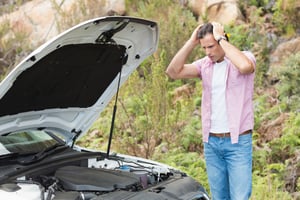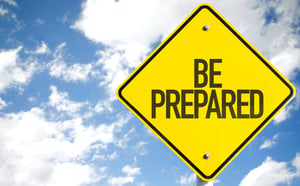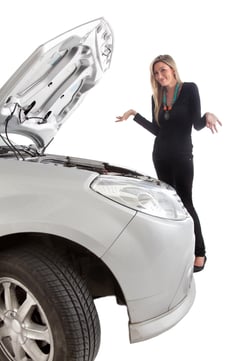 The most important job of the Fleet Managers at Fleet Services is to ensure the safety of drivers. And although every manufacturer in the automotive industry now offers advanced safety features in their newer models, cars are still hi-tech machines that do occasionally experience mechanical failures. Fortunately, our Fleet Management program is supported through our affiliation with Network Inc., and everyone who drives a vehicle acquired through Fleet is enrolled in our Emergency Roadside Service (ERS) program, which works the same way as AAA. So, what should you do you if your vehicle has a mechanical breakdown while you're driving on the highway? To answer this question, we would like to share the following list of Seven Steps To Follow When Your Car Breaks Down On The Highway
The most important job of the Fleet Managers at Fleet Services is to ensure the safety of drivers. And although every manufacturer in the automotive industry now offers advanced safety features in their newer models, cars are still hi-tech machines that do occasionally experience mechanical failures. Fortunately, our Fleet Management program is supported through our affiliation with Network Inc., and everyone who drives a vehicle acquired through Fleet is enrolled in our Emergency Roadside Service (ERS) program, which works the same way as AAA. So, what should you do you if your vehicle has a mechanical breakdown while you're driving on the highway? To answer this question, we would like to share the following list of Seven Steps To Follow When Your Car Breaks Down On The Highway
 1. Be Prepared
1. Be Prepared
It is important to make advanced preparations for a potential break-down by compiling a number of safety items and keeping them stored in your trunk. These items may include: a flashlight, a bright flag/handkerchief, jumper cables, gloves, a hat, & a blanket for cold weather, bottles of water, and, of course, a car jack & spare tire, which should come with every model vehicle. Also, before leaving on your trip, be sure you have a cell phone that is fully charged and a portable phone charger in the car to keep the phone charged.
2. Pull off the road with your hazard lights blinking.
Attempt to carefully pull over onto the right shoulder and bring you vehicle to a full stop, and if you can't make it to the right shoulder, then make sure you pull as far away from traffic into the left shoulder as possible.
3. Assess your vehicle's condition.
Did you notice any unusual sounds or sensations that may indicate the issue? Is there any smoke coming from underneath the hood? Take note of anything unusual, because the Network operator will be sure to ask for pertinent details related to the break-down. NOTE: When getting out of your vehicle to assess the situation, make sure you exit on the passenger side of your vehicle away from oncoming traffic. Never stand in-front or behind of your vehicle, but to the side furthest away from any traffic.
4. Make your vehicle visible.
Keep your hazards on even if you exit the car. Raise the hood, and hang a bright article of clothing or neon flag (you can find these at any local hardware store) from the antennae. Bright, yellow raincoats work as well.
5. Note your location.
Look for the nearest exit, or refer to the last one you passed. Other location indicators are the small, numbered signs on the side of the highway that are mile markers. Even more helpful are landmarks like restaurants, large buildings or other well-known geographical locations. Bridges often have the road name written in concrete--so even if there is no exit, you know what cross-street you are near.
6. Call 911!!
It's a good idea to Dial 911 and alert authorities of your situation. Then, call a close friend or family member and let them know where you are and what is going on. If the tow company indicates that it will be a long while until help arrives, you should ask the responding officer for a ride to the nearest exit and look for a safe location like a restaurant or hotel where you can wait for assistance.
7. Call your Network operator. 800-323-5916
Again, if your vehicle is enrolled in an Emergency Roadside Service program, grab the Driver Kit from your glove box and dial Network's 24/7 hotline. Follow the phone prompts, and be ready to provide the representative with the following information:
- Your name.
- Your phone number.
- Your location (or best estimation).
- A description of your vehicle.
- The nature of your problem (if you're unsure the cause of the break-down, describe the symptoms that you noticed).
- Describe any special circumstances, such as multiple passengers, elderly passengers, infant passengers, or any medical issue.
Of course, we hope you never experience a break-down while driving on the highway, but following these suggestions will help keep you safe if the unexpected happens . . .Fleet Services wishes you many miles of safe motoring!




